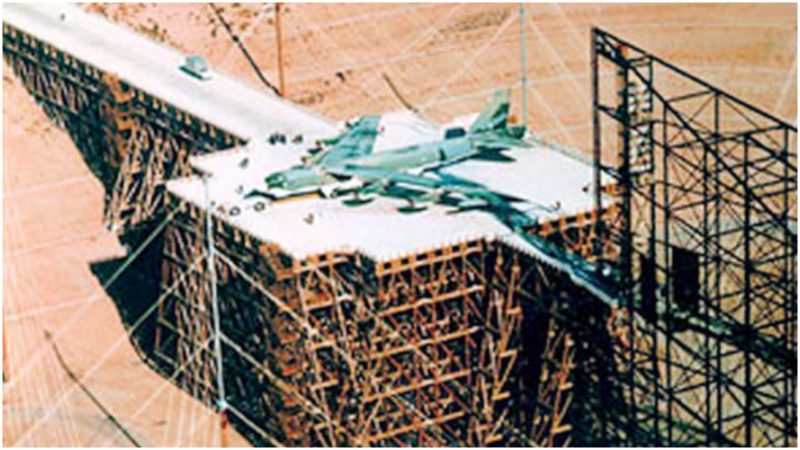To understand the concept of waging war, one does not need to go back to ancient times, for the concept tends to change as technology progresses on its usual upward trajectory, as modeled by Moore’s Law. Developments in the field of atomic weapons during the 1940s helped lay the foundations for the Cold War, and it was under this perceived threat of a potential nuclear attack on American soil that Sandia National Laboratories devised their own playground for testing the latest advancements in weapon design. Scientists here were not primarily concerned with the issue of radioactive fallout; their concern was to develop technology that wouldn’t be affected by a different aspect of a nuclear explosion.
The laboratory is located close to Kirtland Air Force Base, on the southeast of the city of Albuquerque in New Mexico. It is here that a top-secret testing facility was designed, code-named Trestle. The formal name is rather long, though clearly depicts its use; “Air Force Weapons Lab Transmission-Line Aircraft Simulator” or ATLAS-I for short.
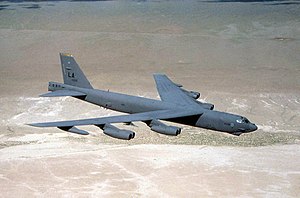
ATLAS-I was a matchless testing contraption for the effects of electromagnetic pulses (EMPs) of damaging radiation. It was devised during the 1970s and was the most advanced non-nuclear electromagnetic pulse generator in the world. The idea behind this contraption is as follows; upon entering outer space, during high altitude flight, or around particle accelerators and nuclear reactors, a certain amount of high energy electromagnetic and particle radiation is present. And, crucially during the Cold War, EMPs of these types are generated by a nuclear explosions. This amount of radiation causes malfunctioning in electronic components, thus the components need to be “radiation-hardened” in order to remain functioning. This can be through manufacturing processes, for example using non-standard electronic chips based on insulating materials materials; by physically shielding electronic components; and through software programming. ATLAS-I was designed to test the radiation-tolerance of different component designs and materials.
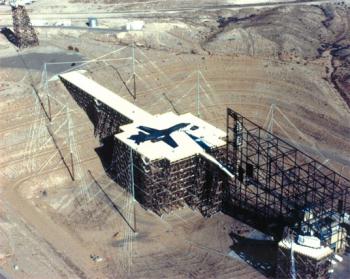
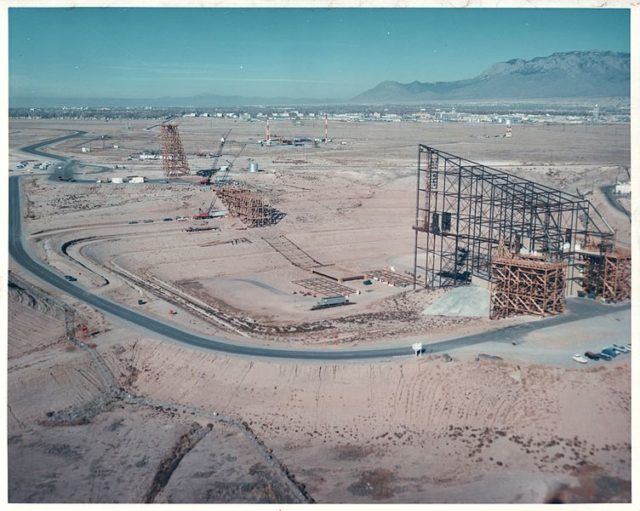
The wooden testing platform, on which the test aircraft was placed, was erected between two Marx generators strong enough to release an electromagnetic pulse like those emitted during a high-altitude nuclear explosion. Each of the generators, which were constructed in San Diego, California, by Maxwell Laboratories, stood on its own wooden tower. These colossal electronic components were enclosed inside sulphur-hexafluoride-filled tanks that served as insulation.
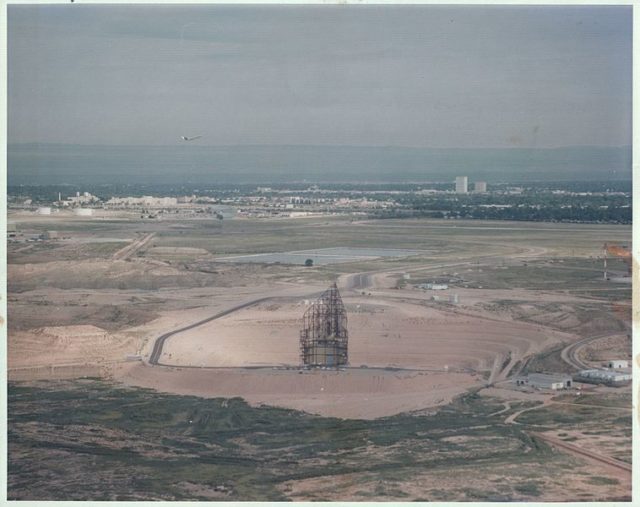
Any metal in the platform structures would cause interference in the testing, hence the need for using wood. The trestle structure was about 12 stories high and took around 6½ million boards of lumber to build. It was held together by woodworking joints strong enough to hold a bomber such as a B-52. The wood types used during the construction were southern yellow pine, for its perfect weather resistance, and Douglas fir, which is perfect for holding big weights such as that of a fully loaded bomber. A very small amount of metal was used to ensure the stability of the platform, while keeping the amount of interference with the EMP to a minimum.
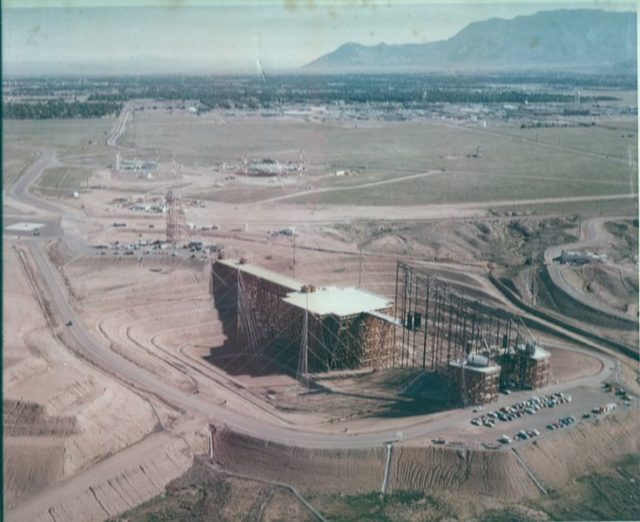
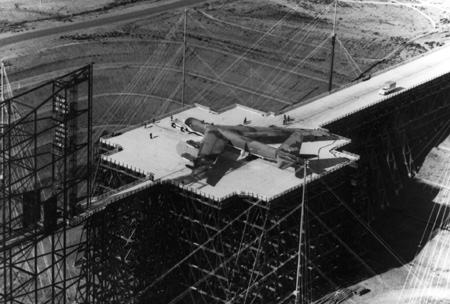
There was another structure on this testing site known as the wedge building. The purpose of this assembly was to serve as a Faraday cage–a structure which would block the electromagnetic pulses. It was constructed entirely of I-beams made of steel and was covered with a fence-like wire. It was here, protected from the EMPs, that the offices and laboratories were housed. There was a special room in this building where all of the crucial components were placed, such as the Marx charging unit, the firing control, the monitoring instruments and data acquisition instruments.
Once the Cold War was over, this program and testing were shut down. As technology progressed, this damaging testing on expensive bombers was replaced with new and less expensive computer simulations.
Since then, the wooden trestle has been abandoned. That it is still standing is testament to the quality of workmanship with which it was erected, effectively making it the biggest metal-free wooden structure on the planet. But such an amount of lumber is a serious fire hazard, since the sprinkler system, of immense importance in a desert-like environment such as this in Albuquerque, was deactivated after the project was terminated
Given its top secret-classified nature, this structure can only be seen from an airplane as it lands or takes off from the Albuquerque International Sunport.
